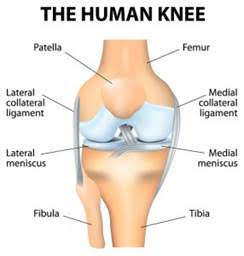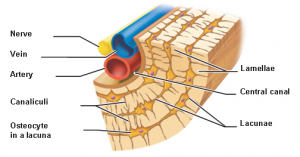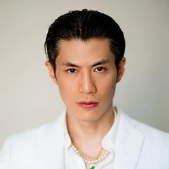Cartilage Regrowth for the Hip and the Knee What is Cartilage? Where bones come together, they are covered in a versatile smooth white tissue to help form the joints. This connective tissue is called articular cartilage. The smooth cartilage in the joints enables the bones to slide over one another without any friction, making it much easier to move. When the bones come together, they are covered with flexible, smooth white tissue to help form the joints. This connective tissue is called articular cartilage. Smooth cartilage in the joints allows the bones to slide over each other without any friction, facilitating motion. It makes the generic cialis drug extremely easy to slide. It likewise makes the erection in guys extremely strong.
There are three types of cartilage, elastic cartilage (discovered in the outer ear, Eustachian tube and epiglottis), hyaline cartilage (discovered on knee, hip, elbow, shoulder joint surfaces), and fibro cartilage (found in the pubic bone, the intervertebral discs, the knee joints or meniscus, and the jaw or temporomandibular joint). Cartilage is not as rigid as bone mass however is likewise not as versatile as muscle.

Cartilage is made out of cells called chondrocytes which operate as the factories for the particles that supply structural and biochemical support for the surrounding cells(called the collagenous extracellular matrix). These factories produce the fibrous proteins that make up collagen,(the protein in the body that is accountable for most of the bone matrix protein material ), elastins, (the proteins that offer elasticity to tissues such as capillary, lungs, skin, and ligaments), and fibronectin,(the glycoproteins that link cells with collagens to help fix tissue during injury healing).
The lube in between joints is a mix of synovial fluid (produced by the fibroblasts), and lubricin, (developed by factories within the extracellular matrix called fibroblast-like synoviocytes).

Cartilage is dense and does not consist of blood vessels or nerves, and for that reason is rebuilt extremely gradually and is difficult to repair.PEMF help in cartilage regrowth. Tendons and Ligaments. Tendons link bone to muscles. Similar to cartilage are the tendons which are built from collagen fibers and are formed in parallel arrays closely packed together.
Ligaments connect bones to bones. Ligaments are likewise formed from collagenous fibers, united in dense routine connective tissue bundles.
Cartilage Damage and Illness
There are numerous illnesses that impact the cartilage.

Osteoarthritis: Knee joint with ligaments and cartilages Osteoarthritis leads to the cartilage which covers the bone,(the articular cartilage), gradually thinning and deteriorating. This leads to a bone upon bone situation which can be extremely painful and minimizes the capability to move. Osteoarthritis can often be the outcome of high stress on a joint due to a particular activity. Generally, osteoarthritis becomes dealt with by surgery and the introduction of implants (replacement artificial joints). Replacement joints are never ever as strong as natural ones.
A removed or ruptured knee can result when the knee is either separated, or the disc in between the 2 bones (articular disk) is ruptured causing a leak of the lubricating synovial fluid and resulting in a bone-on-bone circumstance, which is incredibly painful and adversely affects the capability to move.
Bursitis occurs when the pouches or sacs of synovial fluid, (called bursae) surrounding the knee, elbow or shoulder joint become swollen. This is sometimes referred to as housemaid’s knee and tennis elbow.
Torn cartilage occurs when the meniscus, (the 2 cartilage tissues that provide structural integrity to the knee when it goes through stress and torsion), can also be damaged. The meniscus on the outside of the knee is the lateral (outer) meniscus, and the meniscus on the within of the knee is the medial (within) meniscus.
Costochondritis is the inflammation of cartilage in the ribs which can cause chest pain (medical conditions with “itis” at the end refer to swelling).
Spine Disc Herniation happens when the discs in between the vertebrae are ruptured causing the fluid to leak out (herniate). This fluid has the consistency of toothpaste. This often triggers compression of the nerves and results in back severe discomfort (portrayed right). Depending on where along the spinal column the rupture happens it can trigger feeling numb in the arms, sciatica, bladder issues, and a host of problems.

Slow Cartilage Repair Cartilage is difficult to repair. Cartilage is made by cells called chondrocytes which produce and preserve the cartilaginous matrix. The repair cells lie within little areas within the cartilage called the lacuna and can stagnate to harmed locations. Cartilage in knees, hips, elbows etc, (called the hyaline cartilage), does not have a blood supply. It takes a long period of time to set a new cartilaginous matrix, so it is generally changed by fibrocartilage scar tissue.
Utilizing PEMF to Speed Up Cartilage Repair
Using PEMF is important in speeding up cartilage repair. PEMF energizes the chondrocyte cells which produce the cartilaginous matrix therefore accelerating the production of cartilage. The stimulation of these cells produces new cartilage where previously it was damaged or broken. At the very same time, the osteoclasts break down bone structure that has actually been damaged, worn out, or deteriorated, while the osteoblasts are stimulated to regrow brand-new bone structure.
Regrown Cartilage in the Knee
Clients have actually experienced regrowth of cartilage in knee joints changing the bone-on-bone scenario, recreating the cartilage between the bones increasing the slide, and removing the discomfort. The X-ray listed below shows the knee of a 70-year-old female who was experiencing extreme discomfort when strolling because the cartilage had actually degenerated. The Qi Coil PEMF Therapy motivated cartilage growth in between the bones (on the right) getting rid of the requirement for a knee replacement.
Avoiding Hip Replacement

A common feature of middle aging is the degeneration of the hip joint. The bone structure is decreased due to a drop in bone density from osteoporosis. The cartilage gets used out as the structure collapses leading to bone on bone. Normally the treatment is hip replacement, however, this is often not prescribed for those experiencing hip degeneration at an early age. The Qi Coil PEMF Therapy will stimulate both bone and cartilage regeneration, preventing hip replacement. The X-ray reveals the regrowth of a hip in a middle-aged lady, getting rid of the requirement for a hip replacement on this hip.
Qi Coil PEMF Treatment has consistently resulted in cartilage and bone regrowth, repairing knees and hips and removing the requirement for invasive surgical treatment with the capacity for nerve damage, infections and a lot longer healing time.
Scientific Studies
“PEMF stimulation of osteochondral flaws with calcium phosphate scaffold works in hyaline cartilage development. PEMF is a non-invasive and affordable adjuvant treatment with salvage procedures such as abrasion chondroplasty and subchondral drilling.”( 1 )
The Department of Biochemistry and Biophysics at the University of Rhode Island produced a report which mentioned:
Pulsed electromagnetic fields (PEMFs) of specific configurations have been revealed to be efficient scientifically in promoting the recovery of fracture non-union. They are thought to enhance the calcification of the extracellular matrix. In vitro studies have actually suggested that PEMFs may likewise have the impact of customizing the extracellular matrix by promoting the synthesis of matrix molecules … Histomorphometric studies show that the maturation of bone trabeculae is likewise promoted by PEMF stimulation. These results suggest that a particular PEMF can alter the structure of cartilage extracellular matrix in vivo and raise the possibility that the effects on other procedures of endochondral ossification (e.g., fracture recovery and growth plates) might occur through a similar mechanism.”( 2 )
Conclusions from a study carried out by the University of Ottawa stated:
“Existing evidence suggests that electrical stimulation treatment might supply considerable improvements for knee osteoarthritis …” ( 3 )
The Royal Veterinary Basic College in London likewise reported:
“The impact of pulsed electromagnetic fields (PEMF) on proteoglycan composition in cartilage extracellular matrix has been examined … PEMF treatment … considerably promoted the retention of glycosaminoglycans in the explants and decreased the release of glycosaminoglycans into the media … It is concluded that PEMF treatment preserved extracellular matrix integrity of cultured cartilage explants by down-regulating proteoglycan synthesis and degradation in a coordinated way without impacting their gross structural nature. ( 4 )
Building Obstructs
PEMF will promote the osteoblasts and the extracellular matrix in reconstructing bone structure and cartilage. Good nutrition, minerals, and supplementation are required to provide the structure obstructs for the cells to operate in restoration. Due to soil exhaustion, healthy diets might not include the necessary nutrients in adequate quantities to make a difference. Consult your health care professional to find feasible sources of supplements such as collagen, hyaluronic acid, vitamin K2, and minerals like calcium, magnesium, boron, and silica.
PEMF will supply an essential foundation for healthy aging and repair work using body structures, making it possible to participation in an active lifestyle.

David Wong, also known as “The Qi Master,” is a successful entrepreneur and author who specializes in health, wellness, and Qi Energy. As the creator of Qi Life, he has developed groundbreaking frequency-based technologies that effectively improve health and quality of life. His journey began with self-healing an incurable digestive disease using frequency and energy devices, and his vision is to make physical and mental wellness accessible to all, without the need for invasive procedures or medication. Learn More >>>